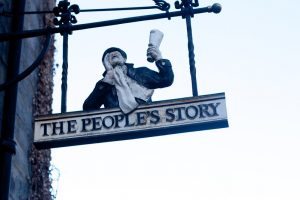 At the close of the previous post, we noted that Nelson Mandela had more than mere blind faith in South African Rugby. He had a plan.
At the close of the previous post, we noted that Nelson Mandela had more than mere blind faith in South African Rugby. He had a plan.
In the president’s mind, the upcoming 1995 World Cup provided his new government a unique opportunity to unite the nation’s whites and blacks. He reasoned that the Springboks—for decades a source of divisiveness between the races—could be transformed into a vehicle to get all South Africans looking in one direction.
Mr Mandela’s vision was more than a part of his proposed path toward national unity. It was also an audacious gamble, one whose implementation depended on two highly unlikely events.
The first of these essential ingredients with little probability of success was persuading South Africa’s blacks to support the Springboks in the World Cup. After such a long history of venomous hatred for the “white man’s sport”, it would certainly not be easy to bring about such a change in attitude.
In addition, most observers felt it highly improbable that the Springboks would generate the excitement necessary to pull in the South African populace—black or white. President Mandela was betting that this squad, which had not been performing well for many months, could advance far in the tournament. As we saw in the previous post, Mr Mandela was among the very few who had confidence that this would actually happen.
In fact, most of the world saw the president’s optimism as wishful thinking by a most remarkable man, but one with little understanding of the game of rugby.
Despite the odds against him, Mandela pressed forward with his project, and he took charge of it in very personal ways. In specific terms, he used three distinct stratagems, each of which relied on his own direct involvement.
The first part of this former prisoner’s ambitious plan was crafting a new story of meaning for South African Rugby. To me, this capacity to change a story is often the characteristic that distinguishes the most effective leaders from all the others.
In fact, I can cite a personal experience that underlines this concept. When I was a professor of leadership at the Grenoble Graduate School of Business, I recall attending a conference at Oxford University. One of the featured speakers there was answering this classic question, “What distinguishes a great leader from a merely good one?” His immediate response was: “A good leader brings results. A great leader writes a new story.”
That answer had a special resonance for me, since the subject of my doctoral dissertation was how leaders persuade others with their personal stories. It is one of the foremost themes of my work, one that has stayed with me throughout my years as a consultant, coach and public speaker.
The career of Nelson Mandela is an outstanding illustration of this principle. He was able to have a profound effect on the direction of his nation, in large part due to his ability to craft stories of change. In the case of the 1995 Rugby World Cup, he seemed alone in recognizing the value of infusing the Springboks’ image with a fresh sense of meaning.
Mandela understood that realizing his objective involved an extremely difficult initial step. The historic emblem of South African Rugby had to be preserved. Taking away something so cherished by the Afrikaners, he reasoned, would mean losing their support for the new government. Without the backing of these wealthy and powerful whites, his rainbow nation project was doomed.
At the same time, retaining the Springbok as a mascot was simply unacceptable to most blacks. In reality, many of them questioned the very right of the Springboks to live on in a democratic, multiracial society.
Early in Nelson Mandela’s term as president, rumors began circulating in the black community that the National Sports Council was preparing to declare, in a unanimous vote no less, that the traditional emblem so dear to the Afrikaners was to be banned forever. Consequently, when the president stepped into the debate and tried to become the savior of the Springboks, he knew he had to do so in swift and dramatic fashion.
Next time, we will explain how Mr Mandela did manage to save the Springboks in the end. In addition, we sketch out two more elements of the president’s scheme for uniting South Africa around the game of rugby.
Image: Flickr user Alan Levine
